another sunset
another swelling moon
heartbreaking beautyTo break our heart is to crack open the shell we forge as protection against life’s slings and arrows. Living with heart open allows us to feel the world’s pain and despair, and also the joy and love.
I choose heart-open, no matter the cost. What do you choose?
The haiku/haibun and photo I posted on social media this morning were inspired by recent events in my own life, including the sudden death of a dear friend and of the tragic wars in Ukraine, Israel and Palestine, and other parts of the world, and the culture wars here in the US. Choosing heart-open living isn’t easy; it means our hearts may become tattered over time.
How can we fix what is broken in our hearts, our culture, our world and this earth?
For me, that involves work to “re-story” my part of this world to help create a healthier planet and healthier humanity.
By “re-storying,” I don’t mean changing the facts to suit my preconceptions or wishes; I mean healing what is broken and thus, writing a new story. Working with the reality we have and through creative shifts, whether the mental/emotional work of changing my own understanding and the narratives we tell ourselves, or in the physical work of restoration of houses things and land.
It requires attentive, compassionate listening to other humans and other species, to buildings and stuff, to the community of the land. It means sitting with a house or a person or a piece of land so unloved that they exude pain. Maybe they smell bad, maybe there are dark places and scary bits. But until we listen to their stories, we cannot understand and nothing can be healed.
It means writing stories that come from a place of lovingkindness. It may mean handing a water bottle and a sandwich to a person panhandling on a street corner and asking how their day is going. And listening without judgment to their response.
It may mean removing invasive weeds to give space to native species who re-weave healthy webs of life and return resilience to land and water, soil and sky.
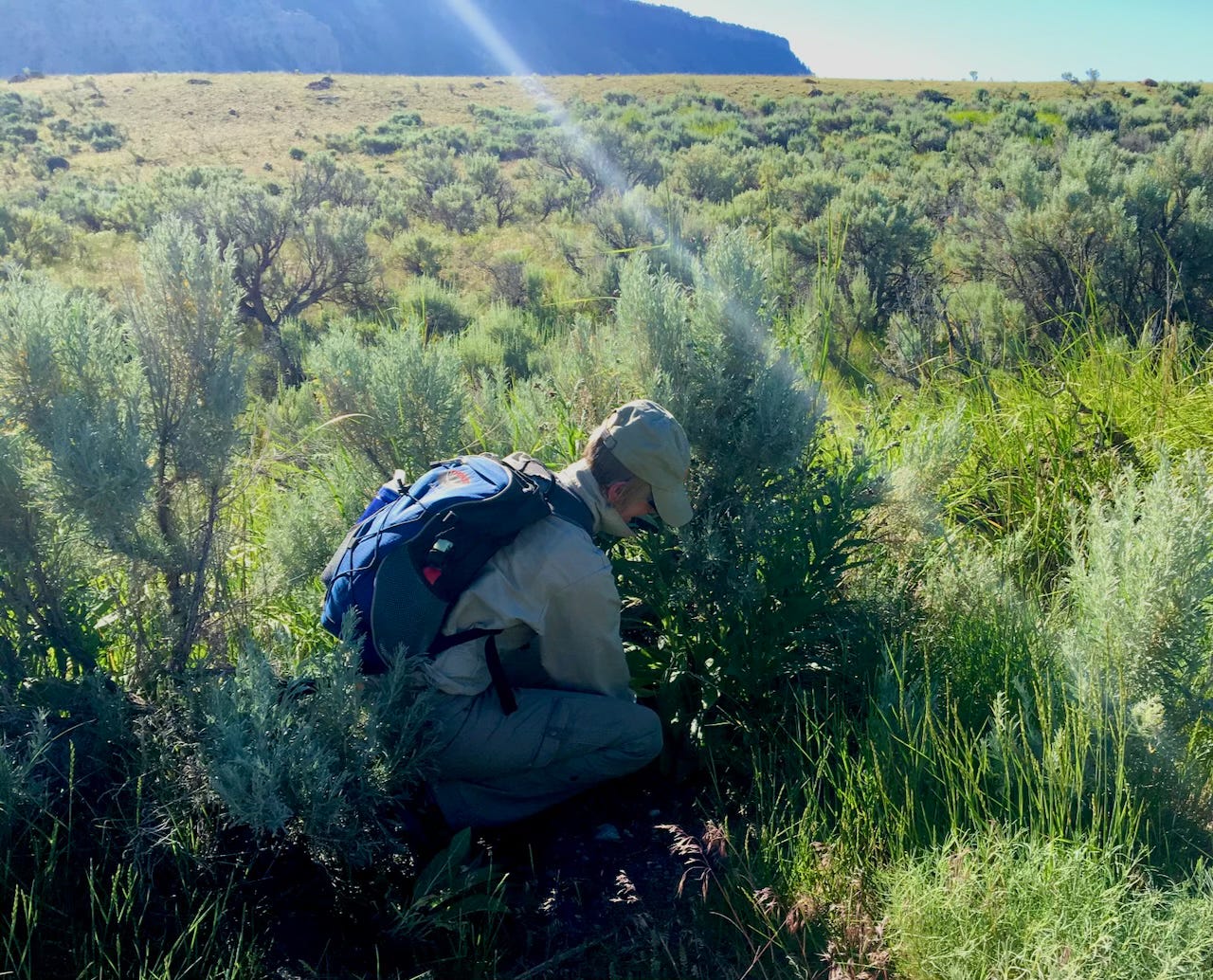
Re-storying may mean the physical work of restoring unloved houses, whether jacking up a house to replace a collapsed foundation or carefully removing an old, no-longer functional window and replacing it with a new one that insulates and opens and shuts.
Re-storying requires me to approach the what-is with an open heart, literally breaking the protective armor I carry to expose my compassionate self to what is real. That’s hard. And scary. But deeply rewarding.
The more re-storying work I do, the more I heal what is hurting around me, the more my own heart and spirit heal, the stronger I become and the more able I am to face the painful and deeply disturbing parts of life. In a kind of paradox, the more I allow the shell around my heart to break, the more hope and compassion I gain, and the greater my love for this planet and each other, human and moreso.
I think of “re-storying” as essential work in being human. As the poet Mary Oliver wrote in “Moments,” we are all offered opportunities in life “that cry out to be fulfilled.” She ends,
There is nothing more pathetic than caution/
when headlong might save a life,/
even, possibly, your own.
There are many ways to approach re-storying this world. You can think of some of your own, I’m sure.
Notes:
The quote from Mary Oliver’s poem “Moments” is from her book Felicity (Penguin, 2016).
I borrowed the word “re-storying” from ethnobotanist and author Gary Paul Nabhan and his book Desert Legends: Re-Storying the Sonoran Borderlands, with photographs by Mark Klett. (Henry Holt, 1994).
Re-Storying Furniture
I am moving in a few weeks, a form of re-storying my own life that I am trying to keep as carbon-conscious as possible. I am buying a used house (in real estate, the term is “existing”—“used” apparently doesn’t inspire buyers!). It’s not far from my condo, so the actual move won’t require huge fossil fuel expenditures.
Casa Contenta, as I call the house, needs some re-storying work, but that work will extend the life of the house by decades, so the trade-off in energy, money and materials seems worth it.
My current furniture, art, books, and other possessions, all collected lovingly over the years, all with stories that are meaningful to me, will be quite at home at Casa Contenta. With one exception: a modern-style leaning bookshelf, crafted with beautiful wood shelves re-purposed from an old industrial building. A couple of days ago, I took that bookshelf to my favorite furniture and art consignment shop to pass it along to someone else.
This is in line with the two rules I have developed in re-storying my relationship with possessions and with money:
Don’t buy new if possible: repurpose existing things.
When something new to me comes into the house, something equivalent has to move along to someone else.
I’m not replacing that bookshelf; there are two built-in bookshelves at Casa Contenta. But… while I was at Consignment Warehouse, I browsed around.
And fell in love with a vintage cafe-size table and two chairs by Sam Bair, a Santa Fe cabinetmaker who I have collected over the years. Including several small bookcases, my writing desk, a coffee table, a side table, two bar stools, a coat tree, a hall bench and four dining chairs. Yup, I have a Sam Bair habit.
Sam is 90 now, and only making a few pieces every year. What I love about his work is the way he uses local, native woods that root the pieces in this place including juniper, and piñon and ponderosa pine. And he showcases their sometimes eccentric shapes, including knots and other irregularities.
Sam told me that he was influenced by Thomas Molesworth, a furniture-maker from Cody, Wyoming, my home country. Molesworth, who worked from 1931 to 1961, drew from the Arts & Crafts tradition of using local materials and natural forms, rooting his work in place.
Sam’s style is very Southwestern, and also vernacular in his use of local wood and natural forms. And it’s priced affordably.
So when I saw the vintage table at the consignment shop, I was torn. I have a lovely but ordinary wood dining table and four Sam Bair chairs to go with it. I don’t need or have space for another.
But this table and the two chairs that went with it are classic Sam Bair—note that skirting of half-ponderosa branches around the table base, and the pegged joints on the chairs. Sam doesn’t make that kind of detailed work anymore after suffering a stroke two years ago.
I drove home thinking about the table, and about Casa Contenta with the eat-in kitchen that would fit that table perfectly. And about my budget.
Yesterday, I gave in: I loaded my current dining table and two of my four Sam Bair dining chairs into my truck, and drove them to the consignment shop. And brought home the vintage Sam table and two chairs. I adhered to both of my re-storying rules: don’t buy new, and don’t accumulate. (My share of the sale of what I brought in should cover what I bought, a relief to my budget.)
The new-to-me table and chairs fit right in. I am very happy to give them a new story and a home!


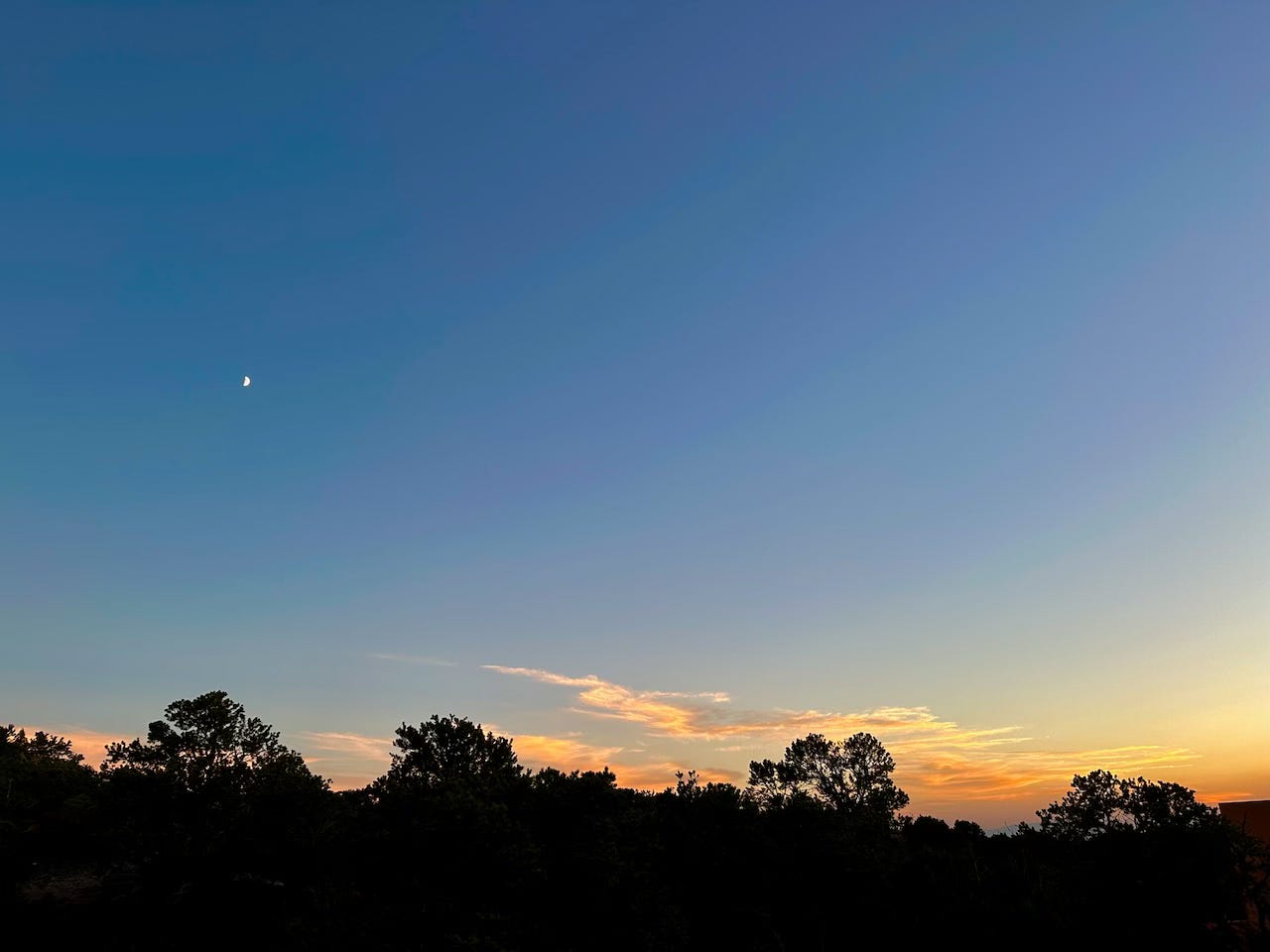
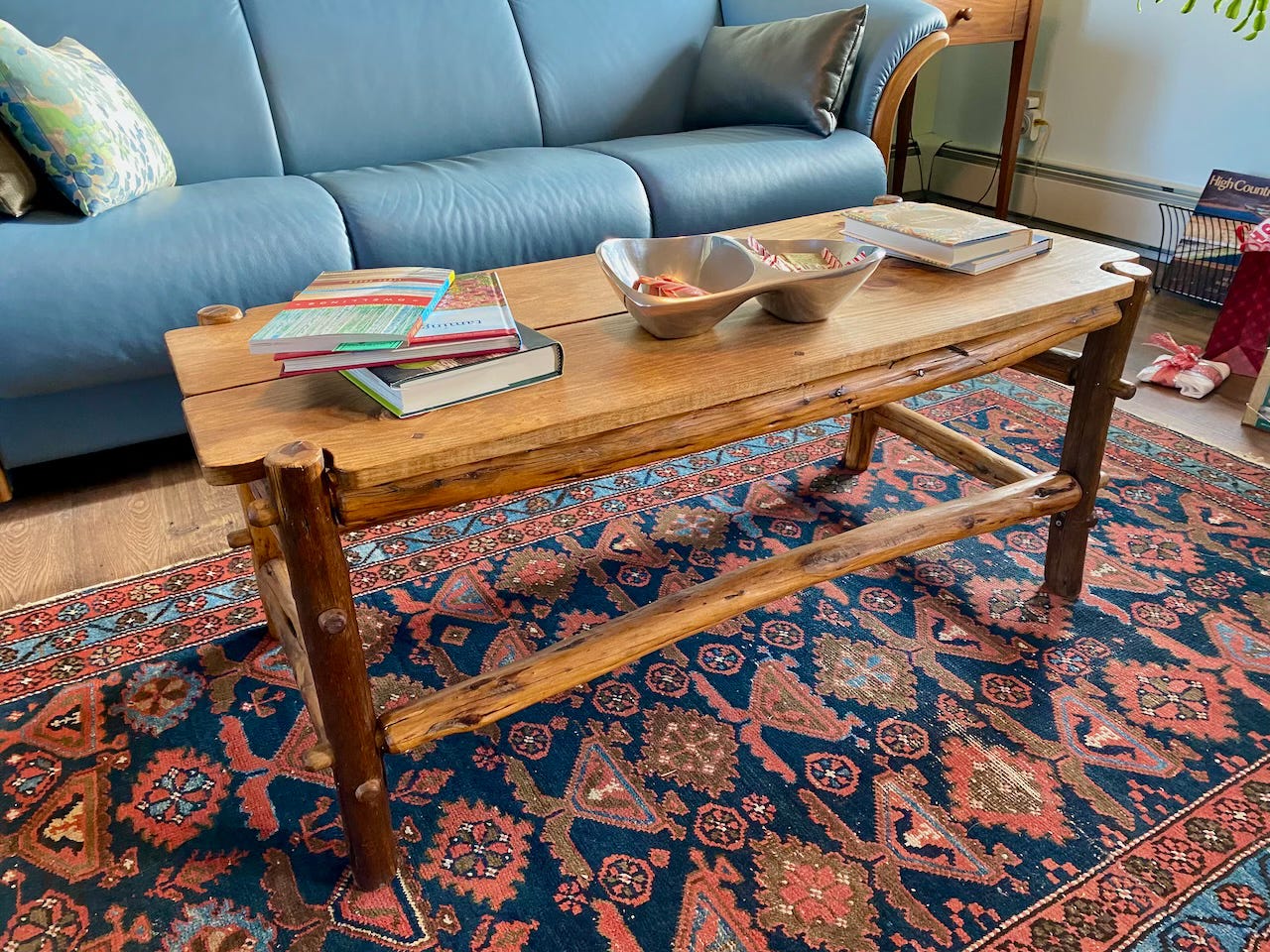
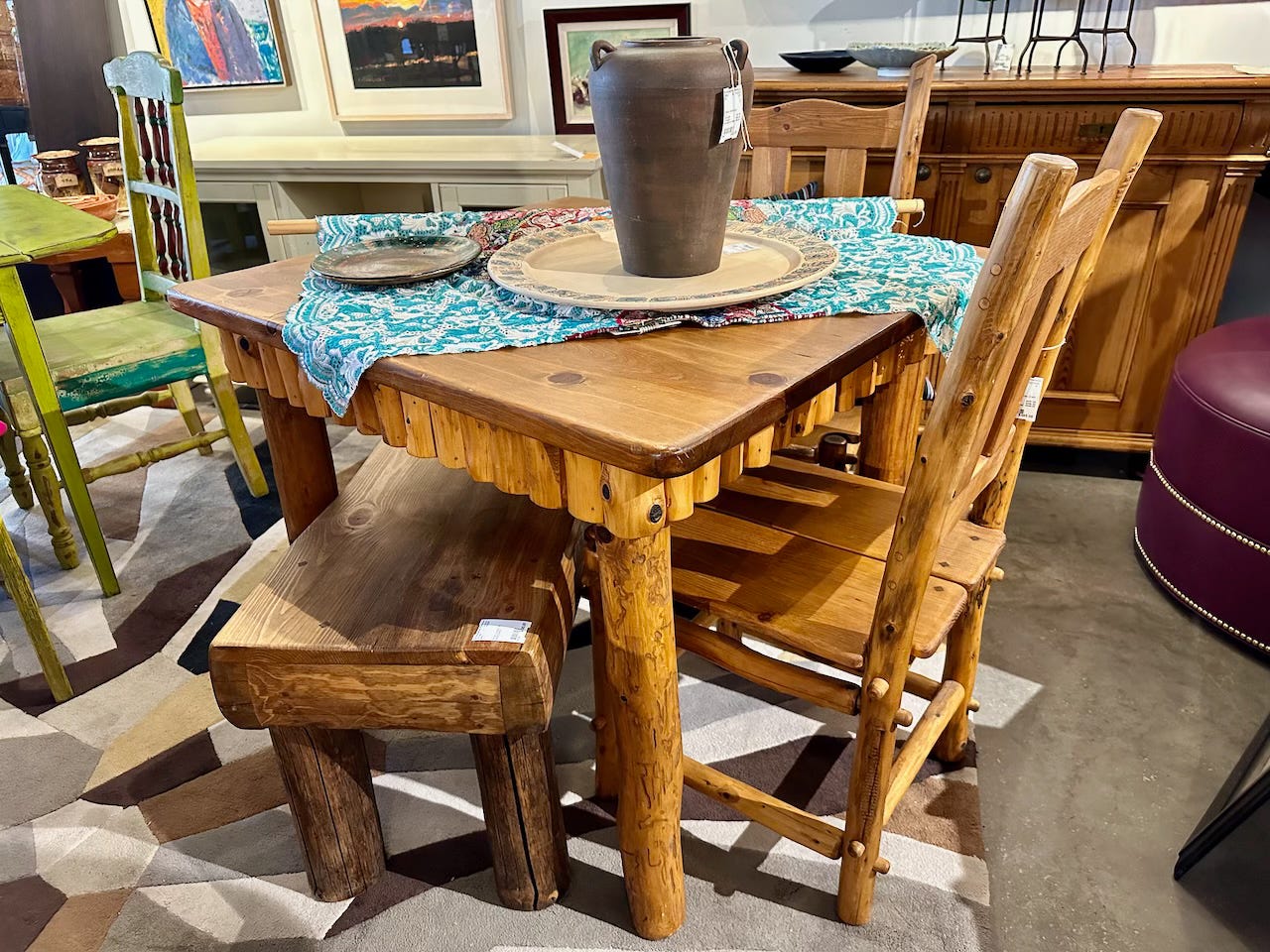
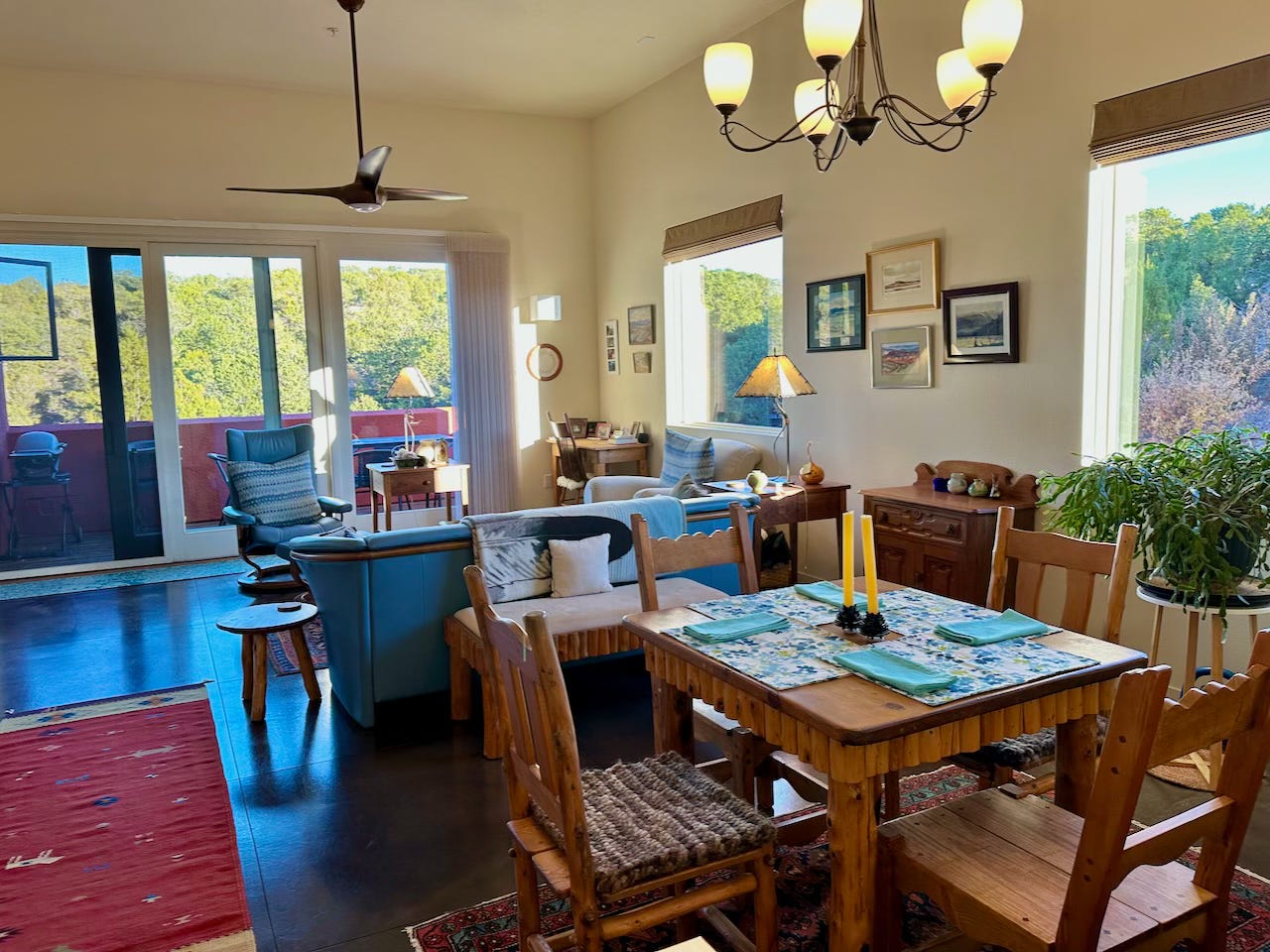
Moments of confluence for me today… Your writing here, David Brooks’ opinion in today’s New York Times, and a sermon I heard today, on the belovedness of the world, and all humans, and how we can change lives by listening to each other and accepting each other just as we are.
Having a large house with lots of cupboards and closets is dangerous. I'm slowly moving things along and definitely not replacing them. I realized my kids and grandkids aren't going to want much of what I do have except for art and a few items. There is a nice feeling as "things" slowly move out the door.